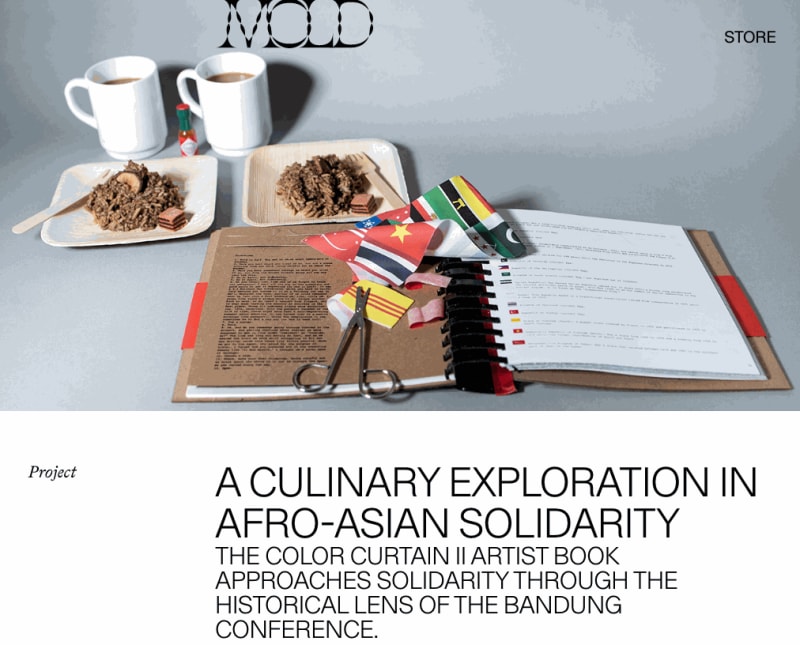In the spring of 1955, world leaders from 29 countries gathered in Bandung, Indonesia in hopes of shaping a new vision for their collective futures. Despite being set against the theater and posturing of the Cold War, the diplomatic conference was devoid of Western power players. Instead, this gathering consisted only of African and Asian nations, many of whom were newly independent. The Bandung Conference, the first large-scale Afro-Asian conference, was held in order to establish a unified front against colonialism and neocolonialism by any country, a space created to have conversations about nuclear disarmament and transnational cooperation on their own terms. While monumental as a precedent for Afro-Asian solidarity, the Bandung Conference is often forgotten in a history populated by Western-dominated narratives. The Color Curtain II, a conceptual artist book with a culinary bent, is aiming to change that by introducing new ways of interacting with the past.
The artist book, which was exhibited virtually by Passenger Pigeon Press at Printed Matter’s inaugural Virtual Art Book Fair this past February, is a continuation of an ongoing exploration of Afro-Asian solidarity by a collective of African-American and Asian-American multidisciplinary artists, scholars and chefs. The project draws its title from the American author Richard Wright’s highly controversial report on the conference in acknowledgment of the collective’s approach to the event from a diasporic lens.
The Color Curtain Project was created by Aerica Shimizu Banks, Desirée Venn Frederic, Adriel Luis, Seda Nak, Tammy Nguyen, Lovely Umayam, and Erik Bruner-Yang, as an attempt to mine the shared experience of food to provide a deeper understanding of how our similarities and differences inform the processes of building solidarity.


